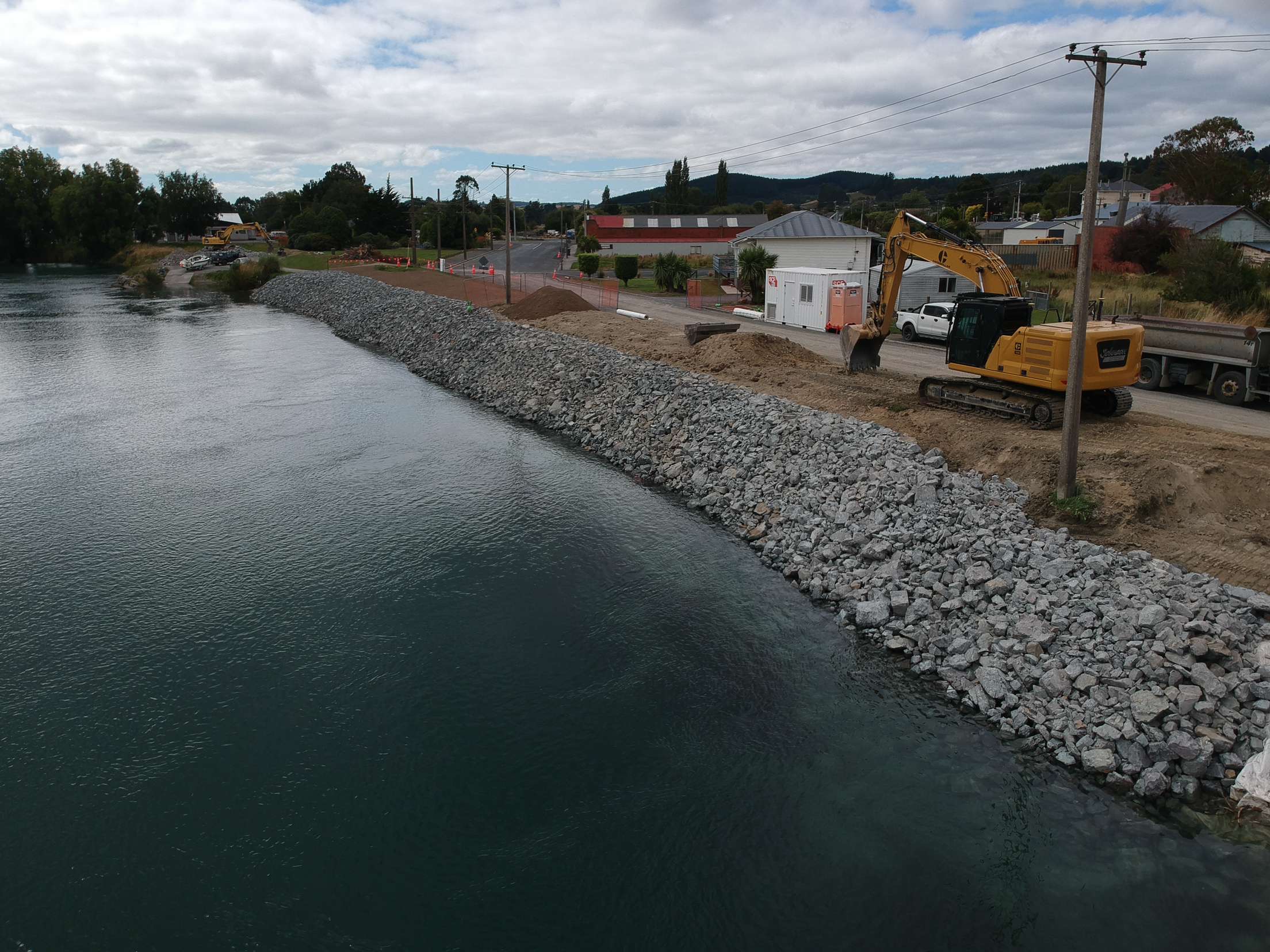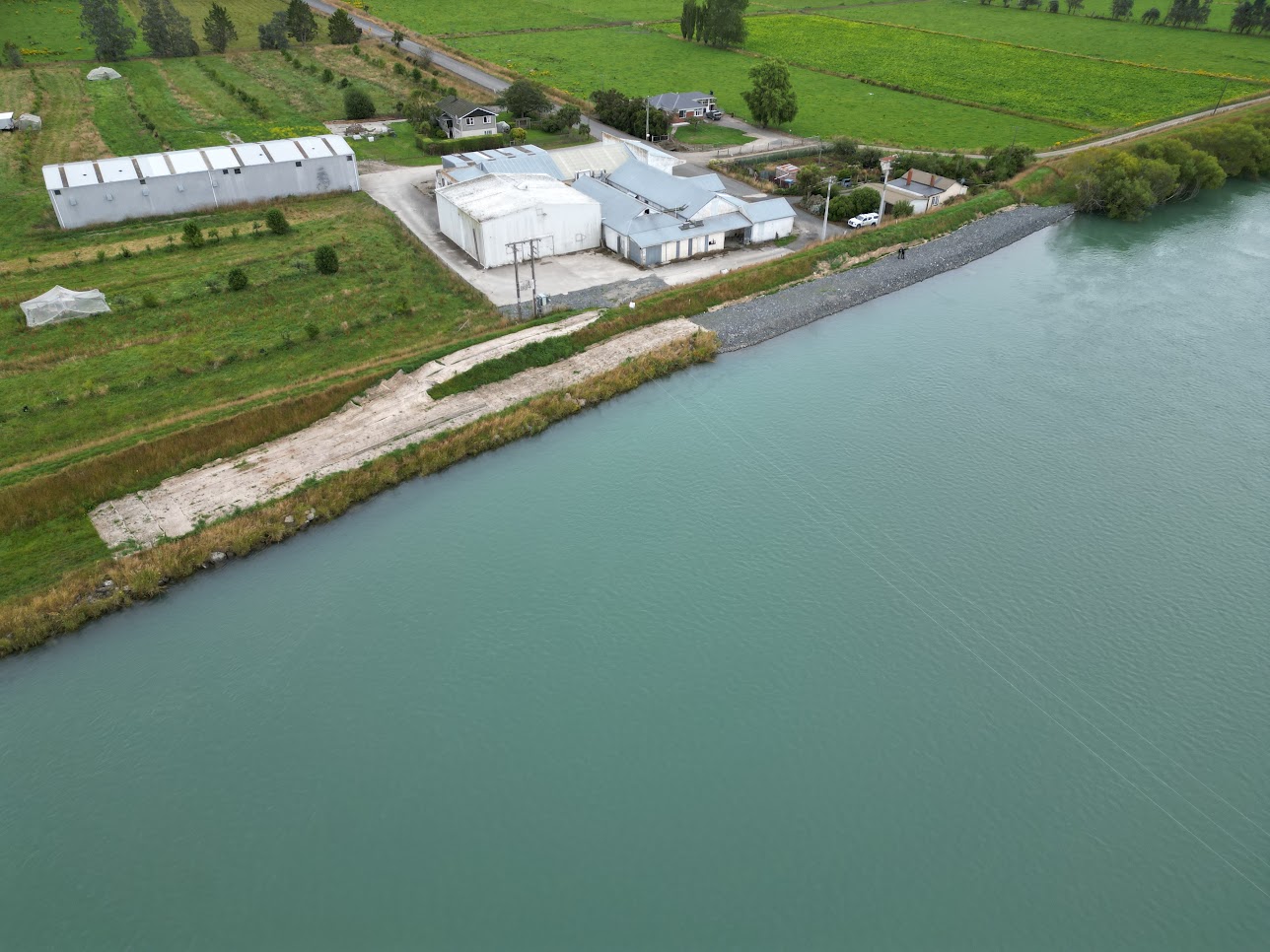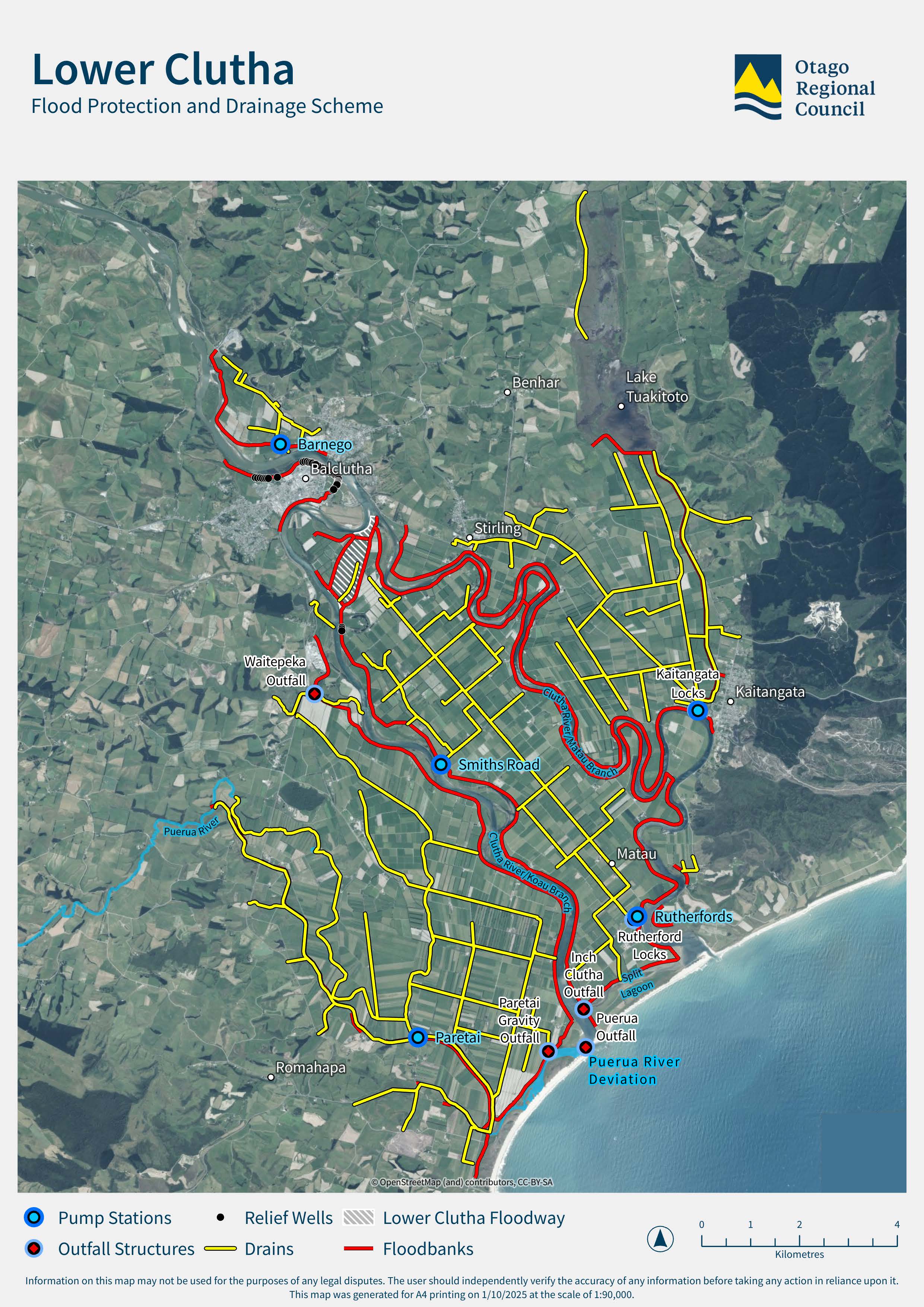Lower Clutha

Otago Regional Council is re-establishing liaison groups for Otago flood protection and drainage schemes.
The Lower Clutha Flood Protection and Drainage Scheme plays a vital role in managing flood risk and ensuring productive land use in the Lower Clutha area in Otago.
The scheme extends from 4 kilometres upstream of the Balclutha township and ends at the sea. It was built over several decades between 1960 and 1991 to protect the towns of Balclutha, Kaitangata and Stirling as well as low-lying farmland.
The scheme comprises both flood protection and drainage assets. Floodbanks around the Clutha River, and other tributaries, prevent water from flooding onto low lying land. A comprehensive network of drainage infrastructure, including pumps, channels, and culverts, is in place to manage internal runoff and maintain arable land conditions.
The Clutha River/Mata-Au is the second longest river in New Zealand, and the largest by average flow. Its headwaters are in the Southern Alps above lakes Whakatipu, Wānaka and Hāwea.
The Clutha River splits into two just downstream of Balclutha. Between 60% and 70% of the flow goes down the Koau Branch and 30% to 40% down the Matau Branch. Between the branches is an island called Inch Clutha – at the top of this is a floodway (an area designed to carry floodwaters when the river level rises).
The purpose of the liaison group is to act as an informal committee who will work alongside ORC to:

The group will act as an informal committee who will work alongside Otago Regional Council.
There is a total of ten seats, with five seats available for community representatives to be voted onto.
One seat is allocated to each of the following areas:
Additionally, there will be specific seats for two mana whenua representatives, Contact Energy, an ORC Councillor, and a Clutha District Councillor.
| Party representatives | Number of seats in group |
|---|---|
| Balclutha | 1 |
| Paretai | 1 |
| Barnego | 1 |
| Inch Clutha | 1 |
| Kaitangata | 1 |
| Mana Whenua | 2 |
| Contact Energy Limited | 1 |
| ORC Councillor | 1 |
| Clutha District Councillor | 1 |
| Total | 10 |
ORC will also continue to actively engage with mana whenua on key issues relating to the scheme, allowing participation in decision-making, and support in the development of capability.
| Area | Representative |
|---|---|
| Balclutha | Dave Botting |
| Barnego | Mike Hurring |
| Inch Clutha | Stewart Morrison |
| Kaitangata | Evan Dick |
| Paretai | Craig Shepard |
ORC owns and manages several other flood protection schemes and drainage schemes as well as a combined flood protection and drainage scheme.
They are:
ORC also owns but commissions external management for parts of the Lower Waitaki River Control Scheme.


The Lower Taieri liaison group was established in late 2024 and now has in place a regular cycle of at least twice-yearly meetings.
The Lower Clutha liaison group will be established in late 2025 and the Tokomairiro Drainage Scheme Liaison Group will be established in early 2026.
You will need to be at the AGM on 13 November 2025 in person to vote for those nominated for the liaison group.
Please feel free to reach out and confirm whether you live in the scheme area by calling 0800 474 082 or emailing customerservices@orc.govt.nz.
ORC owns and manages several other flood protection schemes and drainage schemes as well as a combined flood protection and drainage scheme.
They are:
· The Alexandra Flood Protection Scheme
· The Leith Flood Protection Scheme
· The Lower Taieri Flood Protection Scheme
· The East Taieri Drainage Scheme
· The West Taieri Drainage Scheme
· The Tokomairiro Drainage Scheme.
ORC also owns but commissions external management for parts of the Lower Waitaki River Control Scheme.
From approximately 2019 onwards, following the discontinuation of previous liaison groups, the Council has been undertaking annual drop-in sessions in Balclutha, Mosgiel and Outram to engage with the community on activities undertaken across the schemes. While this has had some success, the approach has had some limitations.
These limitations were raised through feedback with the community and included that the drop-in style format did not provide an opportunity to discuss in detail the expenditure and decisions on some work programmes for both capital and operational work or have input into future work programmes.
As agreed by representatives of the liaison group, the group will meet no less that twice a year, to coincide with the development of draft annual plan budgets and following the receipt of public feedback on proposals prior to Council adoption. This will generally be between May and July, and October and December. The time and location of meetings shall be agreed upon by representatives of the liaison group.
Representatives in the liaison group are able to submit on draft work programmes and rating proposals in the ORC’s Annual Plan or Long-Term Plan. The liaison group has no authority to commit the ORC to any investment path or capital and operating expenditure. The liaison group will operate in such a way as to not compromise the ORC’s freedom to deliberate and make such decisions as it deems appropriate.
Given the significance of the scheme to certain stakeholders, ORC has created specific positions for representatives of the following groups, these include:
This has been done to ensure these stakeholders have a seat at the table to be part of discussions and to ensure their representative groups are involved in decision making.
Yes, voting is held in person at an AGM, or special meeting. You will need to be present to vote.
Nominees are expected to attend; however, apologies will be accepted by nominees who cannot make it to the meeting, and they will be able to be elected to the liaison group.
Nominations to join the liaison group are called for when a position becomes available, or when the scheduled election cycle occurs.
If there are more nominees than positions, an election will be held at the AGM. The nominees who receive the most votes at the AGM will be elected to the liaison group.
As agreed by representatives of the liaison group, but no less that twice a year, to coincide with the development of draft annual plan budgets and following the receipt of public feedback on proposals prior to Council adoption. This will generally be between May and July, and October and December.
In addition, a public annual general meeting (AGM) will be held for each scheme and shall be chaired by the Chair of the liaison group.
Membership of the liaison group is voluntary and as such is unpaid.
The liaison group will:
If you have any questions around the flood protection and drainage schemes, the liaison group, or the nomination process, please don't hesitate to reach out.
You can email us at customerservices@orc.govt.nz
Give your feedback using our online contact us form
Or call us freephone on 0800 474 082 Monday to Friday, 8am to 5pm

November 2025
PDF | 73 KB
Agenda items: Overview of the liaison group, Appointment of liaison group members, Process for each area 1. List nominees 2. Opportunity for nominees to speak 3. Record votes (if required), Confirm liaison group members

September 2025
PDF | 181 KB
August 2025
PDF | 40 MB
Matters for Consideration: 10.1 Outram Floodbank Stability Assessment Outcomes; 10.2 Lower Taieri Flood Protection Scheme Project Budget Revisions; 10.3 Liaison Groups in the Lower Clutha and Tokomairiro Areas; 10.4 Total Mobility; 10.5 Amendment to the Water Plan to give effect to legislative change to the Resource Management Act 1991; 10.6 Jobs for Nature Projects Update; 10.7 Annual Returns of Inactive Subsidiaries.

